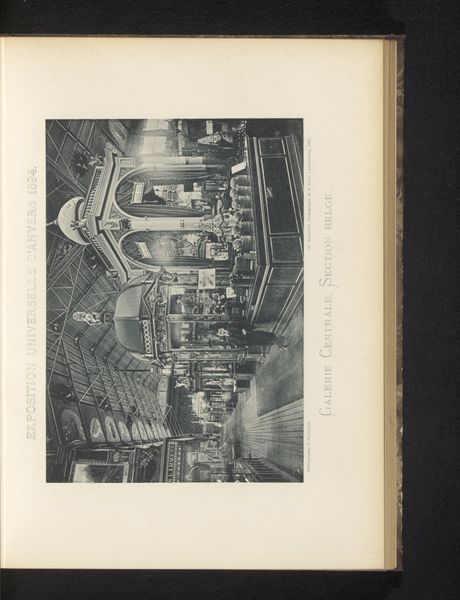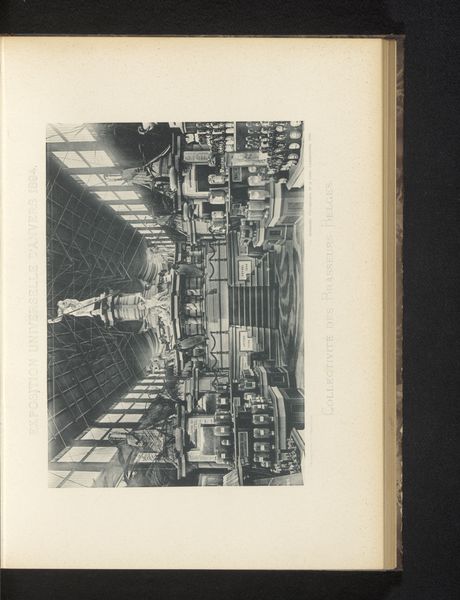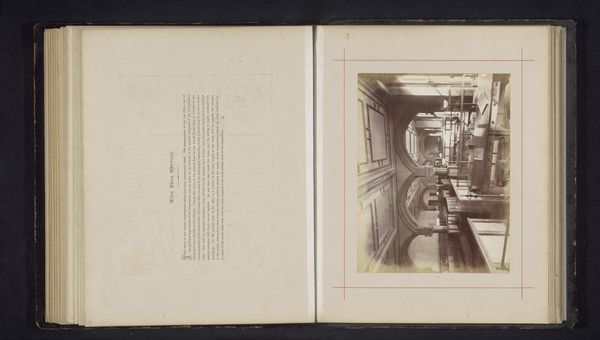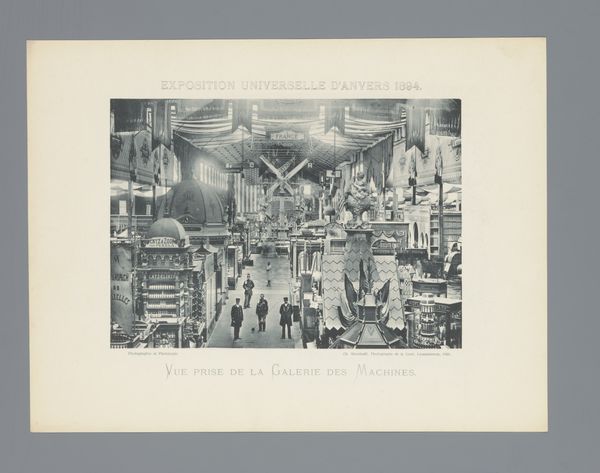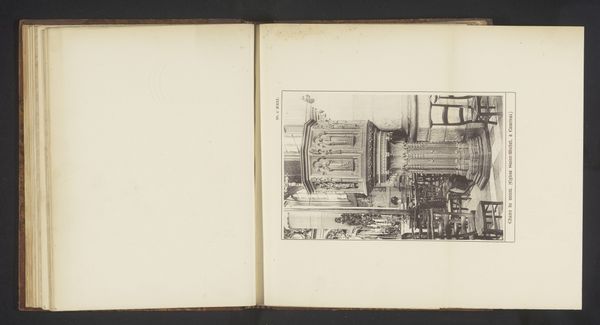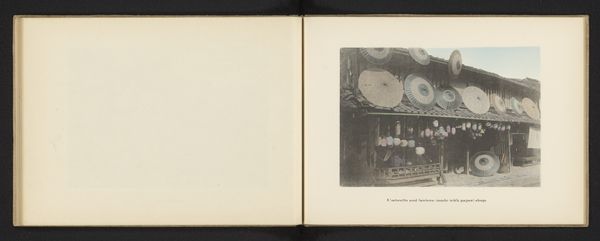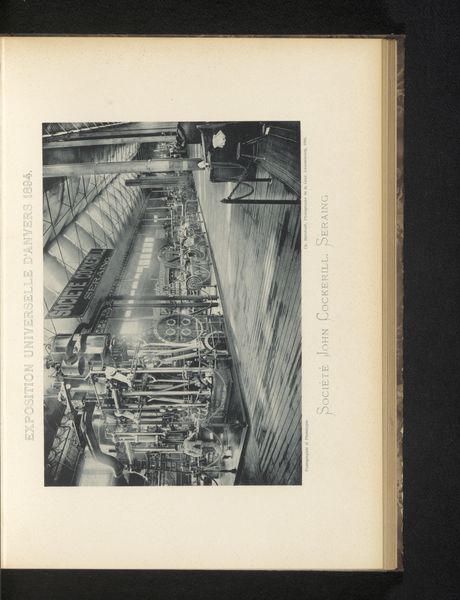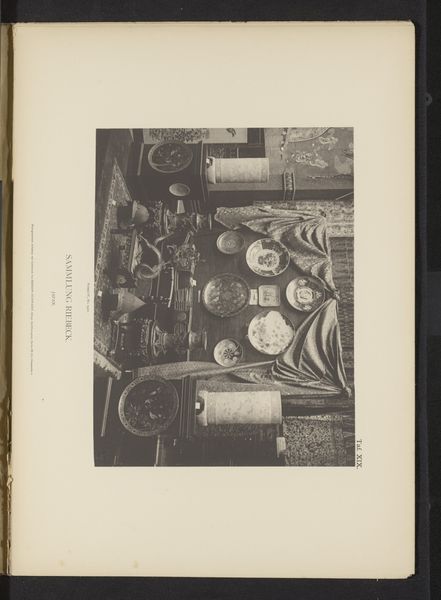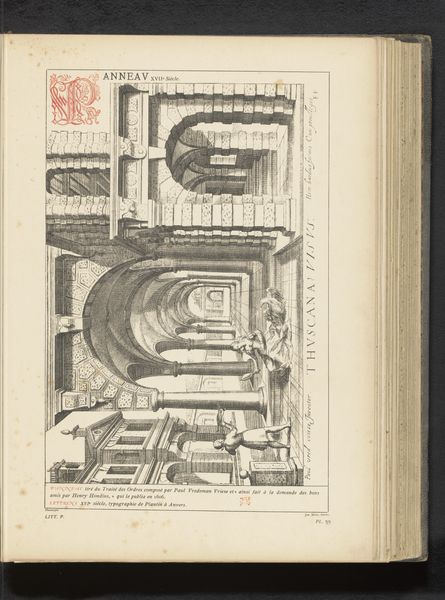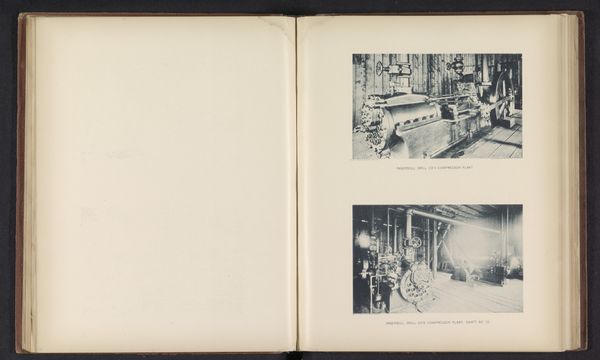
Gezicht op de Italiaanse, Russische en Oostenrijkse delen van de hoofdtentoonstelling van de Wereldtentoonstelling van Antwerpen in 1894 1894
0:00
0:00
Dimensions: height 153 mm, width 216 mm
Copyright: Rijks Museum: Open Domain
Curator: This photomontage by Charles Bernhoeft captures a bird’s-eye view of the Italian, Russian, and Austrian sections of the 1894 World's Fair in Antwerp. Editor: My first impression is the density of the image; it’s packed with stuff, almost overwhelming. You see these inflated silk pavilions juxtaposed with ornate ironwork, and a profusion of exhibited items that seem to shout for attention. Curator: Indeed! These world expositions were about nations showcasing their industrial and artistic achievements. The photomontage allows Bernhoeft to capture this incredible density in one image, a testament to progress, commerce, and national pride, although often laced with competitive anxieties between countries. Editor: I notice how photography’s reproducibility serves the Fair’s own promotional needs. It speaks to the distribution of knowledge, to progress via documentation… The juxtaposition of silk pavilions alongside iron demonstrates an intriguing materiality present within production at the turn of the century. Silk represents trade with the far east, while iron speaks to heavy industry in the west. Curator: Right, and these events also acted as key sites of colonial display. Nations were keen to showcase what they possessed from their colonies, framing non-Western production in ways that asserted the authority of empire. Bernhoeft, here, captured a sanitized perspective, of course. Editor: It's interesting to see that despite its staged character, it still serves as an archive of commodities. Photography, as a form of preservation, is used to catalogue the ambition of industry at a global level. You can feel a shift in this kind of medium, towards capturing scale in both industry and material production. Curator: I agree; in many ways, this singular image encapsulates an age, one rife with both ambition and complex tensions between tradition and modernity. Editor: Seeing it broken down in this way illuminates just how impactful material can be at telling history's stories. Thank you.
Comments
No comments
Be the first to comment and join the conversation on the ultimate creative platform.
